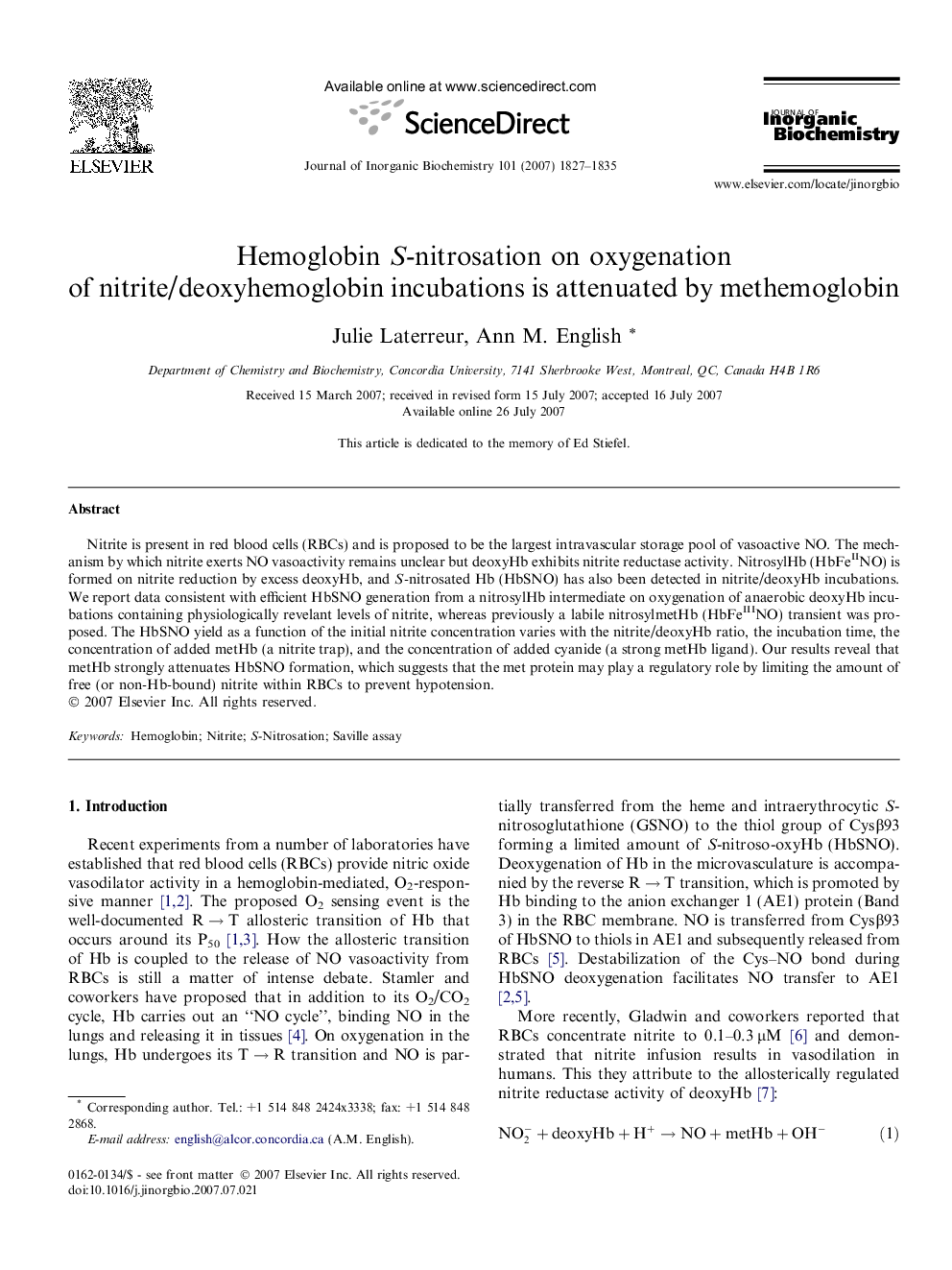| Article ID | Journal | Published Year | Pages | File Type |
|---|---|---|---|---|
| 1317090 | Journal of Inorganic Biochemistry | 2007 | 9 Pages |
Nitrite is present in red blood cells (RBCs) and is proposed to be the largest intravascular storage pool of vasoactive NO. The mechanism by which nitrite exerts NO vasoactivity remains unclear but deoxyHb exhibits nitrite reductase activity. NitrosylHb (HbFeIINO) is formed on nitrite reduction by excess deoxyHb, and S-nitrosated Hb (HbSNO) has also been detected in nitrite/deoxyHb incubations. We report data consistent with efficient HbSNO generation from a nitrosylHb intermediate on oxygenation of anaerobic deoxyHb incubations containing physiologically revelant levels of nitrite, whereas previously a labile nitrosylmetHb (HbFeIIINO) transient was proposed. The HbSNO yield as a function of the initial nitrite concentration varies with the nitrite/deoxyHb ratio, the incubation time, the concentration of added metHb (a nitrite trap), and the concentration of added cyanide (a strong metHb ligand). Our results reveal that metHb strongly attenuates HbSNO formation, which suggests that the met protein may play a regulatory role by limiting the amount of free (or non-Hb-bound) nitrite within RBCs to prevent hypotension.
